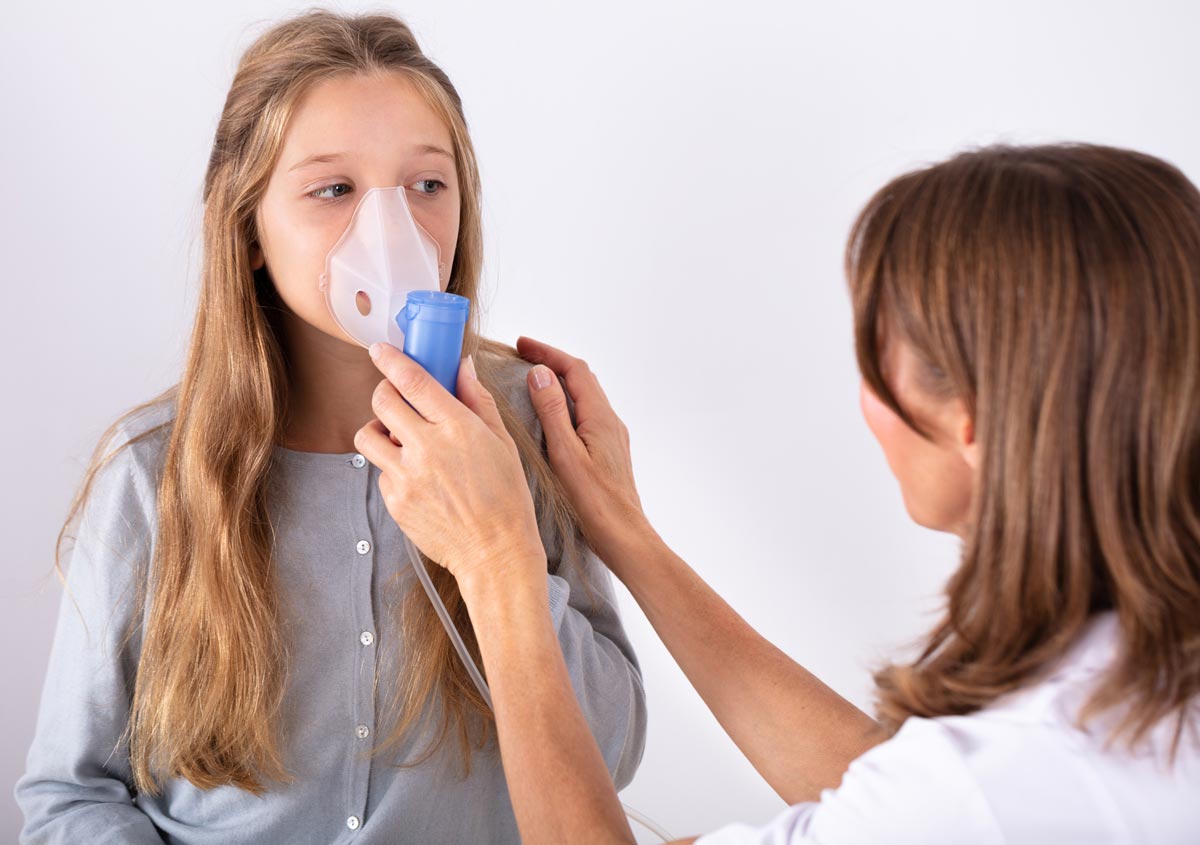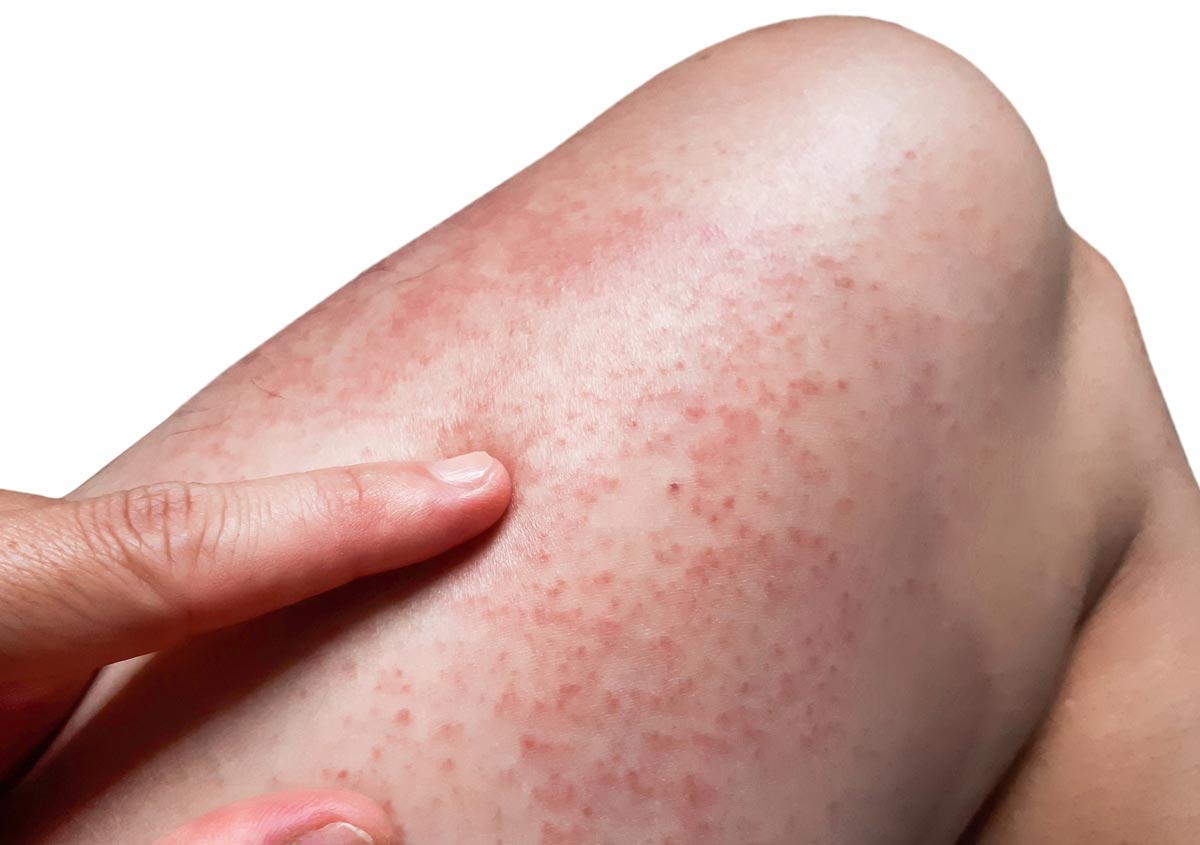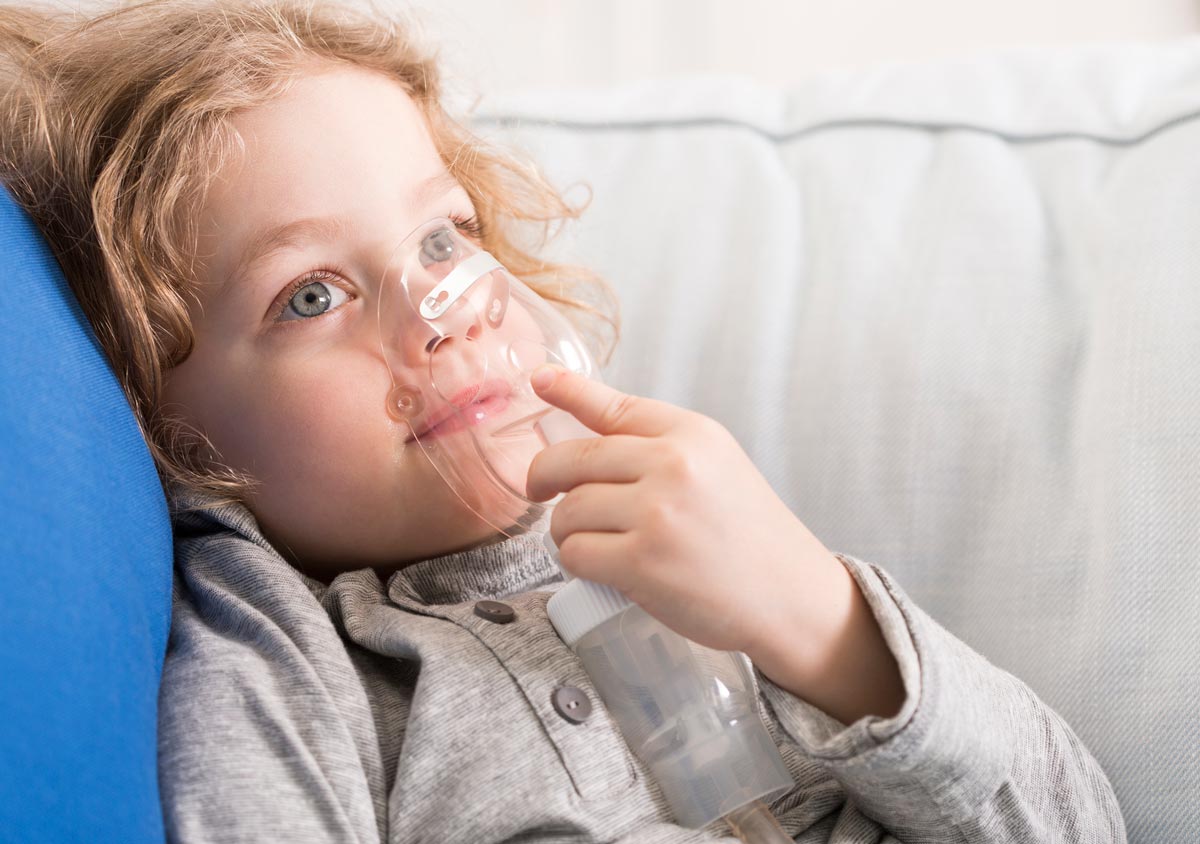Be Educated About Allergies & Asthma
Allergic Rhinitis
Also known as hay fever, this is an inflammation of the nasal passage.Common symptoms include:
- Itchy, red or watery eyes
- Sinus pressure or headaches
- Coughing or throat-clearing
- Post-nasal drainage
- Sneezing
- Nasal itching
- Congestion (stuffiness) of the nasal passage
- Runny nose
- Tree pollen
- Grass pollen
- Ragweed pollen
- Pet dander
- Mold
- Dust mites
Eye Allergies
Also known as allergic conjunctivitis, eye allergies often occur in conjunction with nasal symptoms. This may occur seasonally, or year-around. Common triggers include pollen, animal dander, perfumes, pollution, and cigarette smoke. Several therapies, including anti-histamines, nonprescription and prescription eye drops as well as immunotherapy are available to successfully treat this issue.Treat Allergies on time. Learn from Dr. Noga Askenazi

These allergies need to be treated well and immediately, else it will lead to other diseases.
To learn more about Allergies and the treatment call Dr. Noa Askenazi from Advanced Allergy & Asthma Associates today.
People have what we call in layman’s terms hay fever, the medical term is allergic rhinitis means like a nose that is responding allergically with congestion and dripping, sneezing, itching.The nose is not the only place maybe that affected it actually can be the sinus areas that are affected.
And over time people with significant allergic rhinitis develop sinusitis. They may develop acute sinusitis or develop chronic sinusitis.
The inflammation can really affect all their sinuses and they can get chronic severe headaches, chronic infection that can lead to what we call reactive to asthma from chronic sinusitis.
So many other organ systems can get affected by one type of allergy affecting one place, towards then affecting other places for antibody. An allergy may definitely further trigger other diseases.
Dr. Noga Askenazi and the team are all available in our practice to help with allergy solutions. Contact our team today to book a consultation appointment and learn about accurate allergy testing. (847) 888-8802
Food Allergies
This is an increasingly common problem, affecting as many as two percent of adults and eight percent of children. You can develop an allergy to foods that you have always eaten if your body begins producing an allergy antibody. The most common food allergens are proteins of soy, wheat, tree nuts, peanuts, shellfish, other fish, or cow’s milk.Within a few minutes to a couple of hours after consuming the trigger food, symptoms develop. They include:
- Shortness-of-breath
- Wheezing
- Vomiting
- Diarrhea
- Abdominal pain
- Hives (swollen, itchy, red, bumps)
- Swelling of the throat ,tongue, eyes, or lips
In some people, food allergies can be severe, even fatal. This form of food allergy is called food-induced anaphylaxis. The symptoms of a dangerous reaction include rapidly dropping blood pressure, flushing, or sensation of warming, swelling of the tongue or throat, and wheezing. Anyone experiencing potential food-induced anaphylaxis symptoms should call 911 ASAP.
Most food allergies can be diagnosed quickly and comfortably with skin testing. However, a blood test or an oral ingestion challenge may also be needed.
Sinusitis
Inflammation of the nasal passages is known as sinusitis. It can affect the sinuses (hollow areas behind the forehead and cheekbones) or either side, or both. The sinus passages may narrow for many reasons, and the result is often an infection. One of the most common causes of sinusitis is allergic inflammation.Common triggers include:
- Mold
- Dust mites
- Pets
- Seasonal pollen
- Sinusitis may be acute (temporary) or chronic, lasting for many years without treatment.
- Headaches
- Sinus pressure
- Coughing
- Post-nasal drip causing a foul taste
- Abnormally colored sinus drainage
- Nasal congestion
Bronchitis
This upper respiratory tract infection can occur for many reasons, most commonly an infection leading to airway inflammation. Viral infections are most common, though it can also be caused by bacterial infections. Nasal decongestions and anti-inflammatory medications are usually sufficient treatment.Bronchitis may also occur in individuals with allergy-aggravated respiratory problems. If you experience frequent bouts of bronchitis, and they last longer than an average cold would, we may be able to help you discover the underlying cause of your symptoms.
Allergic Asthma
A common respiratory condition is asthma, which causes the airway to become dangerously inflamed. Although asthma attacks can be triggered by many things, one of the most common is allergic reactions. Controlling asthma is vitally important, as an attack can be fatal.Eczema
Also known as atopic dermatitis, this itchy skin rash is can occur in children and adults. It may appear on the arms, legs, face, and other areas. It is most common in infants; however, adolescents and adults may struggle with eczema. It is often aggravated by allergic reactions, particularly food allergies. Other potential triggers include pollen, pets, and dust mites. The specialists at Advanced Allergy & Asthma Associates/Food Allergy Center of Illinois may be able to determine the triggers for your eczema, and advise you about effective treatments. Recommendations may include over the counter or prescription topical medications and moisturizing creams.Hives
Also known as urticaria, these itchy welts on the skin look similar to mosquito bites, but much larger and raised. Hives are not confined to one area of the body; they typically move around.About one in four individuals will experience hives at least once in their lifetimes. Acute hives disappear within a few days or weeks. Chronic hives are long term, lasting more than several weeks; in some cases, they can last several years without treatment. Often, chronic hives are the result of an immune response that releases histamine to the skin.
This is a common reaction to allergens, and may be triggered by many things including foods and medications. Hives can also be caused by physical triggers including heat, cold, exercise, or scratching. With appropriate testing and customized treatment, we can help you control or eliminate the problem.
Pet Allergies
Dander from dogs and cats remains airborne for extended periods, much longer than other indoor allergies. It also sticks to surfaces and clothing, being transferred to locations where animals are not housed. You may be suffering from a pet allergy even if there are no pets in your home.At this point, it is not clear whether or not keeping pets in your home increases your risk of developing pet allergies. However, we do know that pets in the home are extremely likely to worsen the symptoms of individuals who already suffer from respiratory allergies. Pet dander, urine, and saliva can trigger asthma as well as nasal allergy symptoms. We determine if you have a pet allergy, and offer several effective treatment options.
Insect venom allergies
Yellow jackets, hornets, wasps, and bees sting many people every year. Typically, the reaction is limited to a painful, itchy welt at the site of the sting. This is normal and not considered an allergy.However, certain individuals develop a potentially dangerous allergic reaction, causing their bodies to release IgE (allergy antibody) in response the insect venom protein. Reactions to stinging insects can range from very mild to life threatening.
Most of the time, an allergic reaction to an insect is instant, although occasionally symptoms may appear as long as two days after the sting. The symptoms are similar to those of food allergies, including:
- Abdominal pain
- Diarrhea
- Hives
- Swelling of the throat, tongue, lips, or around the eyes
- Wheezing
- Drop in blood pressure
- Flushing
If you have experienced signs of a potential insect venom allergy, it is important to see a specialist, such as the physicians at Advanced Allergy & Asthma Associates/Food Allergy Center of Illinois. We typically use venom extracts from wasps, honeybees, white-faced hornets, yellow hornets, and yellow jackets with gentle skin tests to detect your allergy. Unlike food allergies, insect allergies can be treated, with an amazing success rate. The only effective, preventive treatment for this type of allergy is Immunotherapy (allergy shots).
Don’t take chances with your health. If you have any condition that may be caused or exacerbated by an allergy, call us at (847) 888-8802 and schedule an appointment. Our offices are conveniently located in Elgin and Crystal Lake.
Allergy tips
Living with allergies isn’t easy, but we can help. Simply attaining an accurate diagnosis can be immensely helpful, allowing you to avoid potential triggers. Many allergies are now treatable with safe, highly effective options such as immunotherapy. Additionally, simple changes in lifestyle can sometimes make a big difference in your health.Dust mites
Limiting your exposure to dust mites is helpful in controlling allergy symptoms. The bedroom is the most important room of the house in this regard, because you spend many hours there every day. Minimize the mites by:- Use enclosed zippered covers on pillows, mattresses, and box springs.
- Wash off waterbed mattresses regularly.
- Wash your sheets and pillowcases at least once weekly, and dry on high heat.
- Keep your home, especially the bedroom, no more than 30 to 50 percent humidity, as mites multiply in a humid environment.
- Avoid carpeting; tile, vinyl, or hardwood is preferable. If you have carpets, use a HEPA filter on your vacuum.
Eczema and Dry Skin Tips
When choosing clothing, pay close attention to the type of fabric. Rough or scratchy fibers, such as wool, often irritate the skin, making rashes worse. Look for soft, non-irritating, non-allergenic fabrics. Other ways to avoid eczema breakouts include:- Avoid excess heat or cold, sweating, chlorine, and harsh soap or chemicals.
- Use an air humidifier in your home, and limit your exposure to cold, dry air.
- Do not bathe with bubble bath.
- Avoid contact with grass during pollen season, which is typically in May and June.
- Avoid contact with anyone who has fever blisters, because herpes virus exposure can result in a serious infection.
Pet Allergy Tips
For individuals with allergies, pets can pose a problem in several ways. Pet dander is a well-known allergen. However, saliva and urine can also be allergy triggers. Pet hair is not considered an allergen, but it can collect allergens such as pollen and mold spores, in addition to reside from saliva or urine. A few helpful pet allergy facts include:- Some breeds may produce less allergens, but there is no such thing as a non-allergenic dog or cat.
- Frequent vacuuming increases the small particles in the air, and is not helpful to this type of allergy.
- HEPA air filters and immunotherapy may reduce sensitivity to pet allergens for some individuals.
- The best solution to pet allergies is removing all animals from the home.
Related Articles
- Fall Allergy Vernon Hills – Vernon Hills area specialists discuss a seasonal risk: fall allergy symptoms
- Allergists Near St. Charles, I0 – When to see an allergist who serves the St. Charles, IL area
An asthmatic individual always has some inflammation of the airways. When something triggers an asthma attack, that inflammation increases and the airway muscles become tight. This restricts the airway, making it difficult for air to enter or exit the lungs. Symptoms of an asthma attack include:
- Tight feeling in your chest
- Shortness of breath
- Wheezing
- Coughing
Exercise-induced asthma
In many cases, physical activity is associated with the onset of asthma symptoms. Some people, who are otherwise healthy, develop asthma symptoms that only occur when exercising. This is known as EIA (exercise-induced asthma) or EIB (exercise-induced bronchoconstriction). Avoiding exercise is not a good solution to this condition, because physical activity is vital for good health. We can help you develop an effective treatment plan so that asthma doesn’t keep you on the sidelines.
Allergic asthma
The most common type of asthma is associated with allergies. The symptoms of allergic asthma are often the same as non-allergic asthma; however, the triggers are different. If you have allergic asthma, your symptoms are brought on by inhaling an allergen.
In most cases, the allergen is a non-toxic, normally harmless substance. However, it causes a complex physical reaction, which begins in the immune system. The allergic reaction causes inflammation in the lungs and airway, resulting in wheezing, coughing, and other asthma symptoms. Some of the most common triggers include:
- Mold
- Pollen
- Pet dander
- Dust mites
If you suffer from this condition, you know that nothing quite compares to the horror of not being able to breathe. We want to free you from that feeling, and from the constant fear of asthma. We want to help you discover the freedom of breathing easy and feeling great! Call us at (847) 888-8802 and schedule an appointment today. We have three conveniently located offices, in Elgin, and Crystal Lake.
- Tightness or pain in the chest. Little ones may describe this as feeling funny, or point at their chests and say something like “it hurts.”
- Labored or rapid breathing(Wheezing). You may notice a whistle-like sound when your child inhales or exhales.
- Coughing, Shortness of breath or Lack of energy. Your child may complain of tiredness or weakness.
Your child’s asthma symptoms may be sporadic, coming and going throughout the year. Some, but not all, asthma triggers are seasonal. In some cases, (exercise-induced bronchospasm) physical activity, such as when playing, participating in sports, or during physical education class at school can bring on an attack.
Asthma can be triggered by many things, including:
- Cockroaches
- Dust mites
- Mold
- Pollen
- Animal dander
- Sinus infection
- Cold air or exercise
- Cigarette smoke
- Upper respiratory infections
Uncontrolled asthma can keep children from doing the things they love, negatively impact their health, and even endanger their lives. We can help. With a cooperative effort between you, your child, and our team of specialists, asthma can be controlled and your child can focus on being a kid! Call us at (847) 888-8802 and schedule a consultation today. We have offices in three convenient locations – Crystal Lake, and Elgin.
The most common culprits are honeybees, who tend to swarm and cause a toxically large number of stings. Because of the scavenger nature of yellow jackets, many people are stung during picnic season. Although hornets and wasps look fiercer than their yellow jacket brethren, they are actually less aggressive. Fire ants exist in the United States and can cause severe allergic reactions. Mosquito and tick bites can also cause a reaction, although less common than with bee stings.
A normal response to a sting is pain, redness, and swelling at the site that resolves within 72 hours. However, for the three percent of adults (mostly male) and one percent of children who experience systemic venom allergy, side effects are dangerous.
Generally, a previous sting triggers sensitivity to venom. During a relatively short period of time after that, another incident, especially of multiple stings, causes the release of an overdose of histamine and inflammatory mediators. The body reacts with these symptoms, sometimes instantly or up to two days later:
- Abdominal pain
- Diarrhea
- Dizziness
- Facial swelling – around the eye, lips, tongue, and throat
- Flushing
- Hives
- Loss of consciousness
- Significant swelling at the sting site
- Sudden drop in blood pressure
- Wheezing and hoarseness
If you or someone near you is stung, hold an ice pack at the site and apply anti-histamine ointment to reduce swelling. If the wound does not improve in a few hours, contact Advanced Allergy & Asthma Associates. Dr. Noga Askenazi may prescribe oral antihistamines, topical corticosteroids, or analgesics for acute local reactions. If serious symptoms appear, call 911 immediately. The emergency responder will administer an injection of epinephrine to halt the anaphylactic reaction. The patient should stay under close observation for at least four hours. Those with a history of allergic reaction to the venom, or who work in an environment where exposure to biting insects and stinging bees isn’t avoidable should consider preventive testing and treatment. The Advanced Allergy & Asthma Associates team has an excellent record for successfully treating these allergies with immunotherapy.
Related Article
- Venom Allergy In Elgin – Are you suffering from a venom allergy in Elgin?
There are five basic types of skin rashes:
Contact dermatitis
This is prompted by contact with something that irritates the skin. Common triggers are poison ivy, oak, and sumac; soap, detergent, and cosmetics; new carpet, toys, appliances, or tools; and latex.
It results in redness, swelling, bumps, or blisters within 48 hours. It may not occur the first time you come across the allergen, but once you’ve had a reaction, you are sensitive to even small amounts of the substance. Contact dermatitis is usually minor but can be quite itchy, and scratching leaves the skin open to secondary infection. If it doesn’t respond to over-the-counter remedies within a few days, call Dr. Noga Askenazi at Advanced Allergy & Asthma Associates.
Infections
Conditions like fungal infections, herpes zoster, yeast infections, impetigo, and sexually transmitted diseases can cause skin rashes. A rash can also be the side effect of a serious disease affecting the liver or kidneys, and some types of cancer.
Insects or parasites
Exposure to scabies mites, bedbugs, and a number of other insects can result in a rash.
Eczema (Atopic Dermatitis)
Eczema is a common type of rash that affects the face, legs, and arms- most commonly seen in infants and younger children. However, older children and adults may also experience this allergic rash as well. Children with a personal or family history of allergies are more likely to have eczema. Food allergies can sometimes make the more severe cases of eczema worse. Other environmental allergies such as dust mites, pet allergies, or pollen allergies may also make the rash worse. We canhelp determine what allergies may be making the eczema worse and provide treatment that may include over-the-counter moisturizers, anti-histamines, and prescription topical medications
Hives (Urticaria)
Hives are red, swollen, itchy areas of the skin. They often look like mosquito bites but may be much larger and are typically round and raised off of the skin. A person often develops many of the bumps at one time all over their body. The hives tend to move around and do not stay in one place very long.
Up to 25% of people experience at least one episode of hives in their lifetime. If hives occur for only a few days or weeks, they are considered acute. Symptoms lasting longer than several weeks are considered chronic. For cases of acute hives, possible causes include a viral infection, food allergy, medications (over-the-counter or prescription), insect allergy, or latex. Acute episodes of hives typically go away on their own. Chronic hives can last for several months or even years. Many cases of chronic hives are caused by an internal immune reaction that leads to histamine release in their skin. A number of people will have symptoms that are triggered by medications, foods, or physical triggers (such as scratching their skin, cold or hot environments, or exercise).
We will help identify any possible allergic triggers, order appropriate testing, and design an individual treatment plan that will effectively treat the hives.
Chronic skin problems
A rash is commonly associated with seborrheic dermatitis, eczema, and psoriasis. Skin that is sensitive to dry climate, very cold or hot weather, and emotional stress may react with a rash. The doctors at Advanced Allergy & Asthma Associates have effective solutions.
Foods and Medications
Allergic reaction to foods (commonly milk, eggs, peanuts and nuts, soy, wheat, and shellfish) or medications may present, in part, as a skin rash. The rash can be accompanied by serious side effects such as anaphylactic reaction or toxic epidermal necrolysis. It is important to seek treatment if the rash doesn’t clear spontaneously, or you experience fever or shortness of breath with it.
Whether one-time or recurring, exasperating or serious, all rashes can be treated for your comfort and safety.
Related Articles
- Allergy Related Rashes in Vernon Hills – Get relief from allergy-related rashes in Vernon Hills area with specialist expertise
- Skin Rash Treatments Crystal Lake – Treatments bring relief to Crystal Lake residents suffering from skin rash
It is classified as intermittent, mild persistent, moderate persistent, or severe persistent based on frequency of symptoms and impact on pulmonary function. Atopic asthma is triggered by exposure to allergens, and non-atopic is an over-response of the immune system triggered by virus, exercise, stress, fumes, dust, or cold air.
Asthma attacks are categorized as:
- Moderate – Typical symptoms such as shortness of breath and wheezing which may get progressively worse.
- Acute/severe – Respiratory and heart rates increase, and the patient usually can’t complete a sentence in one breath.
- Life threatening – Blood pressure drops, there is little respiratory effort, and the patient may lose consciousness. Extremities and mucous membranes turn bluish, and the heartbeat becomes irregular.
- Near fatal – About 250,000 people (worldwide) die each year from asthma. In these extreme cases, mechanical ventilation is critical.
Dr. Askenazi and the staff at Advanced Allergy & Asthma Associates believe that everyone has the right to breathe easily. They have developed a three-step approach to asthma management, customized for each patient.
It begins with an accurate diagnosis. Many other medical conditions cause symptoms similar to those of asthma. Correct identification it is vital to effective treatment.
Studies on reducing the chances of babies developing asthma have so far been inconclusive. Therefore, prevention includes lifestyle changes to minimize triggers, primarily smoking cessation, avoidance of known allergens, and dust mite control in the home.
Treatment plans include a combination of fast-acting medications (usually inhaled for instant relief) and long-term controls. These consist of corticosteroids, long-acting beta-adrenoceptor agonists, leukotriene antagonists, and mast cell stabilizers. Don’t worry – you won’t have to spell their names. Our physicians will see that you understand how and when to use the medications for maximum asthma control.
If you are having difficulty breathing, call Advanced Allergy & Asthma Associates at (847) 888-8802 to schedule an asthma consultation. Our offices are conveniently located in Elgin, and Crystal Lake.
Related Articles
- How To Help Breathing Problems From Allergies in Crystal Lake – Patients in Crystal Lake ask, “How can I get help from specialists for breathing problems caused by allergies?”
- Asthma Specialist Elgin – Are you looking for an asthma specialist near Elgin?
Causing systemic reactions:
Up to 8% of children, and 2% of adults in the United States develop food allergies that can trigger systemic reactions. Food allergies develop when a person’s immune system makes an allergy antibody (IgE) to food proteins that are usually tolerated. The allergy may develop even if the person was able to tolerate the food many times in the past. The most common foods that cause allergies are proteins found in cow’s milk, fish, shellfish, peanuts, tree nuts, wheat, and soy.Symptoms experienced during an allergic food reaction include one or more of the following- hives (red, itchy, and swollen areas of the skin); swelling of the eyes, lips, tongue or throat; abdominal pain, diarrhea, or vomiting; and wheezing or shortness-of-breath. These symptoms typically develop within several minutes to two hours following ingestion of the allergic food.
Approximately one third of infants and toddlers with more severe eczema (atopic dermatitis) may have a food allergy making their rash worse.
Some individuals will experience severe symptoms after eating a food they are allergic to. This is called food-induced anaphylaxis and can be life-threatening. Symptoms include severe wheezing, a large drop in blood pressure, swelling of the tongue or throat, and a feeling of warmth or flushing. In these cases, the allergic reaction is treated with injectable epinephrine, antihistamines, and other emergency medications. Anyone who experiences these symptoms should call 911 immediately.
Diagnosing a food allergy requires a very careful and detailed history- typically by a well-qualified allergist and immunologist. Allergy tests are often used to aid in the diagnosis. Skin testing to the foods in question is typically the most helpful initial test. Blood tests can also be useful in some situations in addition to the skin testing.
Currently, there is no treatment for food allergies other than avoiding the food. It is essential to carry injectable epinephrine in case of a more severe reaction. Careful reading of food labels is also crucial in order to avoid accidental ingestion.
In order to receive an accurate diagnosis and treatment plan, it is important to see a board-certified allergist and immunologist if you or a family member is experiencing symptoms suggestive of a food allergy.
Causing GERD (Gastroesphageal Reflux Disease)/Reflux:
Food allergies and intolerances can aggravate the symptoms and, in some cases, even cause acid reflux. If your acid reflux does not respond well to treatment it may be time to consider if an allergy or intolerance could be playing a role in the problem.Eosinophilic Esophagitis
Eosinophilic esophagitis (EoE) is a newly recognized chronic disease in adults as well as children that is characterized by symptoms of nausea, vomiting, and abdominal pain after eating. A person may also have symptoms that resemble acid reflux from the stomach. In older children and adults, it can cause more severe symptoms, such as difficulty swallowing food or feeling food gets lodged in the throat. In infants, this disease may be associated with failure to grow well.EoE is characterized by inflammation in the esophagus and there is an accumulation of a specific type of immune cell, called an eosinophil found with biopsies. If you are diagnosed with EoE or suspect you have these symptoms, you will probably be tested for allergies. In some situations, avoiding certain food allergens will be an effective treatment for EoE.














